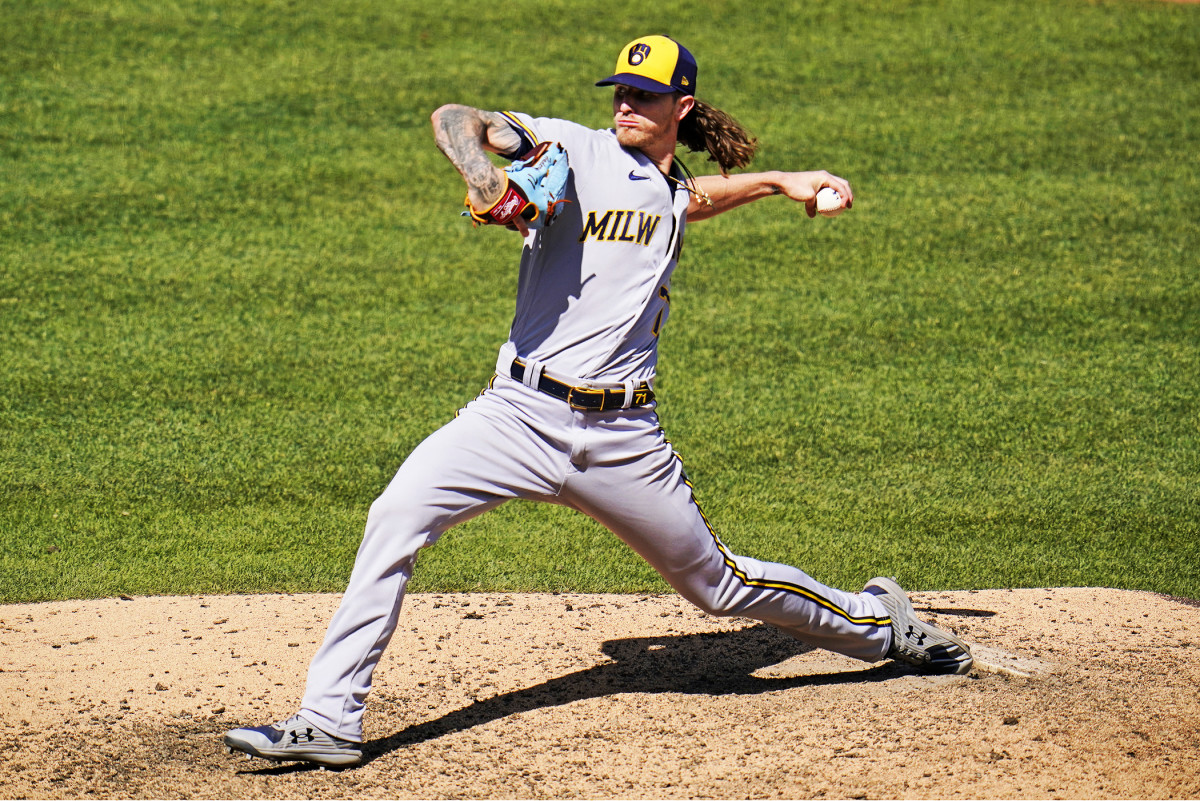Making Sense of the Puzzling Josh Hader Trade Between the Padres and Brewers
Here’s a trade-deadline logic puzzle. A team is an obvious contender—first place in its division and poised for a fifth consecutive playoff run. It has a few games of breathing room, but not a lot, and there are a few clear areas for its front office to address. The team could stand to add some more offense. An outfielder would be helpful. And, of course, what contender doesn’t want a little extra pitching depth?
Instead, this is the team’s first big move of Deadline Week: It trades its All-Star closer away to another playoff hopeful. He is among the best in the game—currently leading baseball in saves despite a recent stretch of uncharacteristic shakiness—with a year and a half to go until he reaches free agency. In return, this team receives that team’s closer, a reclamation project of a pitcher and two prospects.

How do you interpret this move?
- This team really, really does not want to pay its closer when he reaches free agency, and this is the front office’s attempt to recoup as much value as it can.
- This team must know something no one else knows—about its closer, about the competitive landscape, about something.
- This team must have another big move coming.
- This team just is not making sense.
- Actually, one of the parties in this puzzle is noted deadline chaos agent A.J. Preller, and he is off somewhere making four more trades and laughing at the idea of a “logic puzzle,” right at this very moment, as you read this.
There’s an argument to be made for any of these answers. But the line that connects them? No matter what kind of logic one might see underlying this move, it’s still rather unusual, if not downright weird. A contender getting rid of its closer? While telegraphing an interest in staying competitive? With potentially more to come?
So let’s take it out of the realm of the hypothetical and try to break it down as it really happened.
Here’s what we got Monday. The Brewers (the obvious contender) sent Josh Hader (the closer) to the Padres (led by Preller). Milwaukee received Taylor Rogers (the other closer), Dinelson Lamet (the reclamation project) and pitcher Robert Gasser and outfielder Esteury Ruiz (the prospects).
Why would the Brewers want to move Hader? The same Josh Hader with a career 173 ERA+ and 15.4 K/9? Four-time All-Star Josh Hader? Yes, that Josh Hader. The first culprit is the cost. Hader is making $11 million this season and is all but guaranteed to command more in his final year of arbitration in 2023. The budget-minded Brewers are surely conscious of this, and if they were unwilling or unable to figure out a contract extension, it makes sense they would find it wise to move him now. And while it always stings to watch a team move a talented player just to save money—Milwaukee’s bullpen is in a good position to cover the loss here. The Brewers already had another All-Star reliever in Devin Williams. They’ve now landed an additional option in Rogers, who, though he’s taken a step back from his All-Star run in 2021, is a quality closer in his own right. (In fact, while both Hader and Rogers have had their struggles this season, they lead baseball in saves: Hader with 29 and Rogers with 28.) Plus they get some prospects. It doesn’t signal anything approaching a rebuild. But it helps them retool—stretching out their competitive window a bit without having to sacrifice too much in the meantime.
And for the Padres? They get one of the best relievers in baseball. Yes, they gave up some talent to do it, but they held on to all of their top prospects. That could be very important if we see more from Preller & Co.—who are far behind the Dodgers in the NL West but are in comfortable possession of a wild-card spot. And, really, that’s perhaps the most telling detail here: This move came roughly 28 hours before the deadline. There’s still a lot of time to see more that could help fill in the picture here. Especially if, say, San Diego remains in on a certain young outfielder … ?
A closer-for-closer and contender-to-contender swap might look strange. It is strange! Brewers president of baseball operations David Stearns acknowledged as much in a statement that was unusually loaded with caveats for a deadline press release: “Trading good players on good teams is difficult, and that is certainly the case with Josh. We also recognize that to give our organization the best chance for sustained competitiveness, to avoid the extended down periods that so many organizations experience, we must make decisions that are not easy.” Unusual as it is, though, it’s not illogical—for either side. And there’s plenty of time for more action that could illuminate this trade even more.
Editors’ Note, Aug. 1, 4:07 p.m. ET: This story has been updated to include David Stearns’s statement.
More MLB Trade Deadline Coverage:
• Everything You Need to Know Before the MLB Trade Deadline
• Juan Soto Trade Deadline Predictions
• The Weirdest Baseball Trades Ever
• With Luis Castillo Trade, Mariners Are Aiming for October Run
• The Biggest MLB Trade Deadline Needs for Every Playoff Contender
